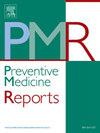Policy stakeholders' perspectives and use of data, research evidence, and misinformation in three counties in California, USA during the COVID-19 pandemic, 2020–2022
IF 2.4
3区 医学
Q2 PUBLIC, ENVIRONMENTAL & OCCUPATIONAL HEALTH
引用次数: 0
Abstract
Objective
This study investigates how local policy stakeholders viewed and used research evidence, data, and (mis)information in county policy discussions during the COVID-19 pandemic.
Method
We employed document and exploratory content analysis methods to examine Board of Supervisor materials (N = 534 policy documents) from general and special/emergency meetings (March 2020 – December 2022). We purposefully selected three jurisdictions from California, USA with varying socio-demographic, political, and health care characteristics as case studies.
Results
Many residents who commented during local policy discussions contested the: 1) validity of health data provided (i.e., mortality rates), and 2) efficacy of proposed preventive measures like mask wearing and vaccine receipt. While government officials and healthcare personnel referenced research evidence and data as justification for these measures, several stakeholders expressed skepticism about the information presented in all three counties. Perceptions of misinformation included statements by residents that questioned the COVID-19 information provided by government officials or reflected a belief that federal and state government agencies (e.g., Centers for Disease Control and Prevention, CDC) were sources of misinformation. An emergent finding was that many residents voiced uncertainty and requested more information about local pandemic conditions and policy mitigation strategies.
Conclusions
Results reveal a distrust of public health and government officials and data/information shared in local policymaking debates during the COVID-19 pandemic. Local health departments may benefit from investing in efforts to increase their credibility as trusted sources of health information among community members. Local government agencies should develop transparent health promotion campaigns to identify and dispel misinformation.
2020-2022年2019冠状病毒病大流行期间美国加利福尼亚州三个县政策利益攸关方的观点和数据、研究证据和错误信息的使用
目的本研究调查了在COVID-19大流行期间,地方政策利益相关者如何在县政策讨论中查看和使用研究证据、数据和(错误)信息。方法采用文献和探索性内容分析方法,对监事会一般会议和特别/紧急会议(2020年3月- 2022年12月)的资料(N = 534份政策文件)进行分析。我们有目的地从美国加利福尼亚州选择了三个具有不同社会人口、政治和医疗保健特征的司法管辖区作为案例研究。结果在当地政策讨论中发表评论的许多居民质疑:1)提供的健康数据(即死亡率)的有效性;2)提出的预防措施(如戴口罩和接种疫苗)的有效性。虽然政府官员和卫生保健人员引用研究证据和数据作为采取这些措施的理由,但一些利益攸关方对这三个国家提供的信息表示怀疑。对错误信息的看法包括居民对政府官员提供的COVID-19信息提出质疑,或认为联邦和州政府机构(如疾病控制和预防中心)是错误信息的来源。一个紧急发现是,许多居民表示不确定,并要求提供更多有关当地大流行情况和政策缓解战略的信息。结果显示,在2019冠状病毒病大流行期间,人们对公共卫生和政府官员以及在地方决策辩论中共享的数据/信息存在不信任。地方卫生部门可以通过投资努力提高其作为社区成员可信赖的卫生信息来源的信誉而受益。地方政府机构应开展透明的健康促进运动,以查明和消除错误信息。
本文章由计算机程序翻译,如有差异,请以英文原文为准。
求助全文
约1分钟内获得全文
求助全文
来源期刊

Preventive Medicine Reports
Medicine-Public Health, Environmental and Occupational Health
CiteScore
3.90
自引率
0.00%
发文量
353
 求助内容:
求助内容: 应助结果提醒方式:
应助结果提醒方式:


